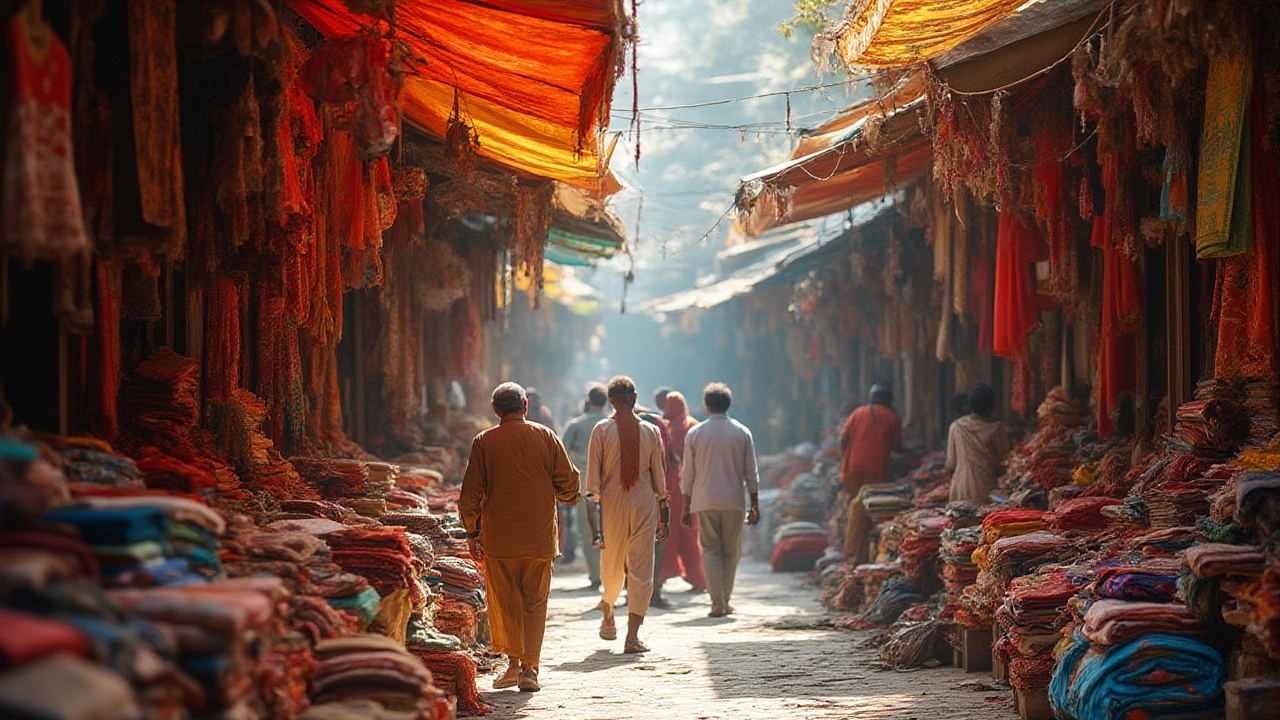Fabric Manufacturing Countries: Who’s Winning the Global Textile Race?
When you ask where most of the world's clothes, curtains, or upholstery come from, a few names pop up instantly – China, India, Bangladesh, Vietnam, Turkey and the United States. These countries don’t just produce fabric; they shape prices, trends, and even the way we think about sustainability. If you’re hunting for a reliable supplier or just curious about the industry, knowing the strengths of each fabric powerhouse can save you time and money.
Top Fabric Producing Nations and What They Make
China still wears the crown. It churns out everything from cheap polyester blends to high‑end silk, thanks to massive factories, low labor costs and a well‑developed logistics network. In 2023, China exported over 7 billion meters of fabric, making it the go‑to source for many global brands.
India shines in cotton and natural fibers. With vast cotton fields in Gujarat, Maharashtra and Telangana, India produces some of the softest, most breathable fabrics on the planet. Indian mills also specialize in organic and hand‑loom textiles, which are gaining traction with eco‑conscious shoppers.
Bangladesh is famous for cheap knitwear, but its fabric sector is growing fast. The country has invested heavily in modern weaving looms and now exports sizable amounts of cotton and blended fabrics, especially to Europe and the US.
Vietnam focuses on synthetic fabrics and technical textiles. Its factories are known for quick turnaround times and competitive pricing, making Vietnam a favorite for sportswear and outdoor gear brands.
Turkey combines quality and speed. Turkish producers are strong in woven fabrics like denim and linen, and they ship directly to European markets, cutting transit times dramatically.
The United States may not lead in volume, but it excels in specialty fabrics—think performance textiles, denim, and high‑end upholstery. American mills often market “Made in USA” as a premium label.
What Drives Their Success?
First, raw material access. Countries with large cotton or synthetic fiber production can keep costs low and control quality. India’s cotton belts and China’s petrochemical plants are perfect examples.
Second, government support. Export incentives, tax breaks, and dedicated textile parks help manufacturers scale quickly. Bangladesh’s Ready‑Made Garments (RMG) policy is a case in point.
Third, technology adoption. Automated looms, digital pattern design and AI‑driven quality checks give a competitive edge. Vietnam’s push for Industry 4.0 has already cut waste and boosted output.
Finally, workforce skill. Skilled weavers in Turkey, seasoned technicians in China, and a growing pool of textile engineers in India keep the industry humming.
If you’re sourcing fabric, start by matching the material you need with a country that’s strong in that segment. Need soft, breathable cotton? Look to India or the US. Want cheap polyester blends at scale? China and Vietnam are your best bets. Searching for sustainable, hand‑loomed pieces? Turkey and India have niche producers ready to cater.Keep an eye on trade policies too. Tariffs can flip the cost equation overnight, so staying updated on NAFTA, EU‑India agreements, or China‑US trade talks helps you avoid surprises.
In short, the global fabric landscape is a mix of raw material abundance, policy support, tech upgrades and skilled labor. Knowing which country ticks the right boxes for your product can turn a gamble into a smart business move.

Best Countries for Wholesale Fabric: Top Global Suppliers and Sourcing Tips
Discover the world's top wholesale fabric countries with insider tips, real data, and sourcing tricks for finding the perfect supply partner for your needs.
